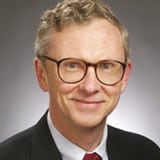Gilead Sciences (GILD) is a major biopharmaceuticals producer focusing on life-threatening diseases. Founded in 1987 by Michael Riordan, a 29-year-old medical doctor, Gilead has grown to over $22 billion in revenues, notes George Putnam, editor of The Turnaround Letter.
Two-thirds of Gilead’s current sales are produced by its powerful HIV treatment franchise. Products to treat hepatitis C (“HCV”) generate another 17% of its revenues, with hepatitis B, blood cancer, cardiovascular and anti-infection products comprising the balance.
The company completed its initial public offering in January 1992 at $15, producing a 256x price gain, excluding any dividends, to its peak $120 (post-splits) price in 2015.
However, since the 2015 peak, Gilead’s shares have fallen by nearly half. The company’s remarkably strong historical revenue growth has now reversed, with accelerating declines over the past three years to a 15% rate in 2018.
While its HIV franchise continues to grow, demand for its HCV products is shriveling as patients are being cured and competition from new and cheaper treatments has intensified. Near-term prospects for growth from other products currently appear limited.
The shares also bear the weight of fears over increased government pressure to reduce prices, including potential “Medicare for All” legislation. With this narrative, amidst a strong bull stock market, it’s perhaps not a surprise that Gilead shares continue to slip.
Gilead’s discarded shares offer considerable value. At a highly discounted 6.6x EV/EBITDA multiple, the shares are cheaper than nearly all comparable peers.
The company’s revenues are stabilizing, as continued growth in the HIV franchise should offset declines in HCV treatment revenues. With little value ascribed to the research pipeline, any improvement in its prospects offers additional growth potential.
Its wide 50% EBITDA margins, combined with minimal capital spending needs, will likely allow Gilead to generate over $7 billion in free cash flow this year, ahead of last year’s prodigious $5.6 billion in free cash flow.
This would be more than enough to pay for the modest $1 billion in capital spending and $2.4 billion in dividends, leaving over $4 billion of surplus cash flow (nearly 19% of revenues).
Gilead’s balance sheet, already flush with over $30 billion in cash (more than the $27 billion in debt), buttresses its fundamentals and provides firepower for acquiring promising new treatments.
Importantly, the company recently brought on a new CEO. Daniel O’Day, previously the long-time head of the pharmaceutical division of Roche Holdings, joined on March 1st. His fresh perspective and expertise in oncology should help boost Gilead’s revenue growth prospects, and he is likely to impose cost controls that would improve margins.
Long-term investors have an opportunity to look past the company’s uninspiring current narrative to potentially healthy returns driven by both the generous dividend and a potential rebound in the stock price.


















